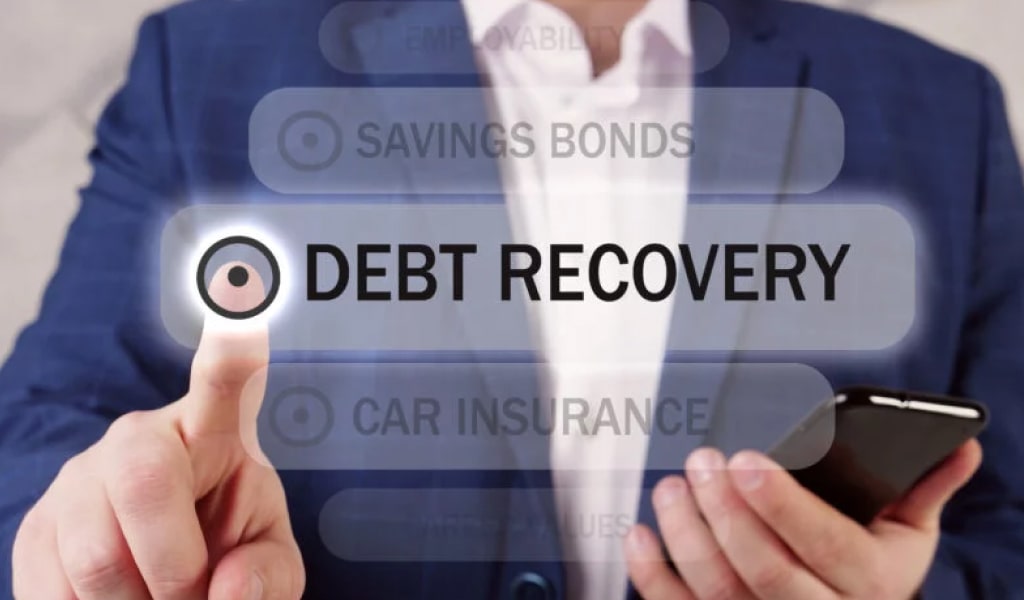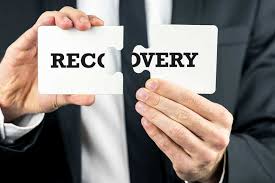Candour Legal – Best Lawyers in Ahmedabad | Law firm in Ahmedabad

Debt recovery is a core component of the financial management of creditors, defined as a policy and a mechanism that creditors adopt and use to recoup their money owed by the debtors. If debts remain uncollected, creditors may encounter financial problems with their liquidity, profitability targets, and ability to meet financial responsibilities. Consequently, timely and efficient recovery from debt becomes pivotal to ensure that companies, banks and people who lend do not undermine their financial stability and overall health.
Due to easy availability of debt through banks and financial institutions, the bad debts have also increased significantly. It’s important to understand the legal remedies related to debts and have a debt recovery lawyer by your side.
At Candour legal, we are one of the debt recovery lawyers of Ahmedabad, specializing in the field of debt recovery law. Our experienced team is led by Mr. Manasvi Thapar, who is an expert in dealing with Debt recovery matters.
Let us understand the debt collection procedure
The initial stage of the debt collection procedure involves a creditor checking on due debts. This primarily requires collecting pertinent documentation such as agreements, invoices, purchase orders, and all correspondence regarding the debt. When debts are identified, creditors contact debtors to demand debt repayment. In this sense, creditors inform debtors of their obligation to repay any outstanding sums. The relationship can begin with letters, email correspondence, telephone calls, and other similar means, calling on due payers to settle their debts as fast as possible.
Recovery of debt is protected by consumer laws that are specifically designed to prevent unambiguous, absurd, or unfair conduct concerning creditors and debt collectors. Such laws can prohibit harassment, fraud, or deceit of debtors and reverse discrimination of debtors.
Recollection of debt is also protected by statutes of limitation, which vary depending on the place and the kind of debt recovered. These statutes state that creditors can legally initiate legal proceedings in the curial system before their debts expire. With the limitations on the statute’s duration, creditors may no longer be able to file lawsuits for the debt, though they can try to collect it nonjudicially.
Debt Recovery Methods:
1. Negotiated Settlement
The creditor can negotiate an agreement with the debtor. The debtor may agree to discharge the debt with their money or through a specific instalment plan.
2. Legal Notice
Creditors can engage a legal officer to create a legal notice that should be seen by the debtor to facilitate the debtor’s payback within a certain time frame. This letter has a formal notification and allows the creditor to start legal proceedings in case the debt remains unpaid.
3. Civil Suit
They can file a civil case in the appropriate court to repay the money. This will get the procedure started formally through legal means, showing the evidence and requesting the judgment from the court, which the debtor should pay immediately. In civil remedy, the aggrieved party brings a suit on sending the legal notice to the debtor. This notification is done formally; information in the request for money is revealed due to the debts due, or the compensation sought is for the damages caused. If the debtor, after the notice, continues the default, the affected party could then proceed to file a civil case to the proper court. Finally, the judgement will be made in the court. The judge will consider all the facts presented and the lawyers’ reasoning, and a decision will be made regarding the debt or compensation.
4. Summary Suit
The creditors can proceed under summary suit in Order 37 of the CPC for petty matters of small debts, not above some declared ceiling. Such an offer creates the possibility of a quick legal procedure by spending less time for the debtor to reply. If the debtor skips the court hearing, the court can consider the creditor’s statements valid and continue resolving the case in favour of the creditor.
5. Debt Recovery Tribunals (DRTs)
DRT is a taxation mechanism created by the central government in 1993 for specific recovery purposes, per the Recovery of Debts Due to Banks and Financial Institutions Act. It manages loan recovery cases from borrowers and quickly proceeds to litigation in the civil courts.
6. SARFAESI Act
By the Securitization and Reconstruction of Financial Assets and Enforcement of Security Interest (SARFAESI) Act, banks and other financial institutions can send for recuperation and sell the securities of the borrowers who default on their payments, on some conditions though.
7. Insolvency and Bankruptcy Code(IBC)
Where the borrower is incapable of repaying the debt, insolvency proceedings under the IBC are common from the creditors’ side. Therefore, based on the circumstances, disputes can be resolved and recovery made either through the corporate insolvency resolution process or liquidation.
Debt Recovery Strategies
1.Out-of-Court Settlement:
Definition: A relaxation of liability by the creditor and the debtor resolved the debt standstill out of the court system.
Process: The parties are also involved in settlement negotiations in which concessions on the outstanding balance, either through a reduced lump-sum payment or a payment plan, are acceptable to all parties.
Benefits: It avoids the time and expenses of legal procedures. Preserves confidentiality. And, more sensible terms than a court ruling can be agreed upon.
2. Debt Consolidation:
Definition: Consolidating several loans into one loan or payment plan(maybe) with a lower interest rate or more reasonable terms
Process: When you consolidate your debts, you secure a new loan to repay them. After that, you make only one payment every month, and in the end, you repay your debt.
Benefits: One of the major advantages of debt consolidation is that it simplifies the process of managing your debt, lowers interest rates, and reduces the risk of default by making the payments more affordable.
3. Negotiation:
Definition: One-on-one conversation with the credit and debtor to positively decide on debt default.
Process: Both sides discussed the options of lengthening the payment period, lowering the principal balance, or reducing the overall sum payable by the debtor.
Benefits: This feature allows for adaptive plans, which can accommodate the debtor’s financial circumstances and thereby help preserve the business or personal relationship.
4. Debt Restructuring:
Definition: Debt restructuring by changing the payment terms, such as reducing the interest rate, extending the maturity dates, or lowering the total debt, makes it more reasonable for the debtor to repay the debt.
Process: Creditors with an empathetic outlook might strike a deal with the debtor to extend the repayment period and either lower the interest rates or forgive a portion of the debt.
Benefits: It works as a friend, shouldering burdens for distressed borrowers; protects debtors from defaults and bankruptcies; and creditors can recover a compromise solution which is better than none.
5. Bankruptcy:
Definition: The procedure where persons or companies may apply for the redemption of debts by dismantling or restructuring assets or liabilities.
Process: The bankruptcy petition is filed in court on the debtor’s behalf, and a debt judgment is made based on which bankruptcy process (Chapter 7, Chapter 13… etc.) is chosen. As a result, assets may be sold to repay creditors, or a repayment plan might be created.
Benefits: It offers a brand-new slate for individuals overwhelmed with unsustainable debts and stops collection actions such as the deduction of personal assets and the repossession of property, possibly resulting in debt freedom.

Conclusion:
In summary, debt recovery is a multi-layered process that requires consideration of certain aspects, including the nature of the debt, the debtor’s financial situation, and the creditor’s legal options. While the debt collection process itself is required to collect all unpaid debt from debtors, it has to abide by legal regulations and ethical practices.
Debt recovery becomes effective if the negotiations are started with proactive communication, where mutually acceptable eligibility out of court is arrived at, which saves time and cost for both parties. Alternative recovery approaches range from agreed-out-of-court settlements, debt consolidation, negotiation, and debt restructuring, all of which enable creditors to get back their money and also give debtors access to manageable repayment plans.
While failure to negotiate or nonpayment can force creditors to resort to legal recourse, such as lawsuits or bankruptcy, it will be the last option due to its harmful impact on credit scores and overall reputation. However these methods might resolve the problem, they may also entail certain risk factors, such as high legal expenses, damage to business relationships, and potential adverse effects on the debtor’s credit score.
Ultimately, the successful loan collection remark depends on the wise and tactical approach, considering each circumstance’s specific features. By focusing on clear communication, investigating different methods, and bearing these legal and ethical factors in mind, lenders could have their chances of maximising the outstanding debts, while causing minimal interruptions and keeping the relationships with debtors optimistic.
At Candour legal, we have one of the best debt recovery lawyers in Ahmedabad. Whether it is recovery for MSME, legal consultancy regarding debt recovery or filing a debt recovery suit in the court, we offer top notch legal services.
Led by Mr. Manasvi Thapar, we are committed to provide our clients with practical and effective solutions in order to help recover their debts. Contact us @ +91-7228888745. to learn more about different solutions and legal protections







